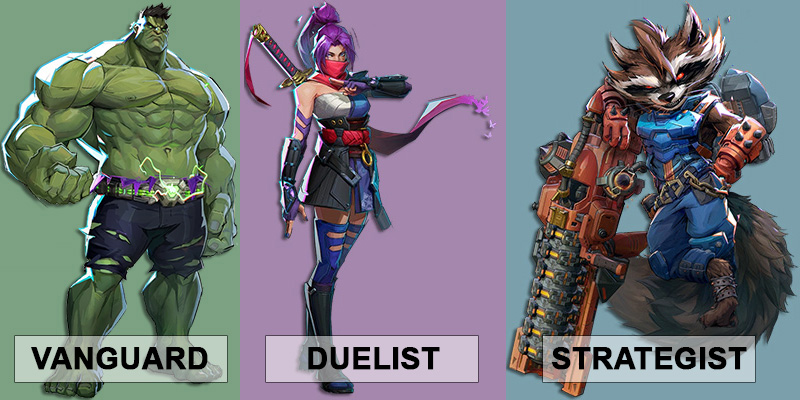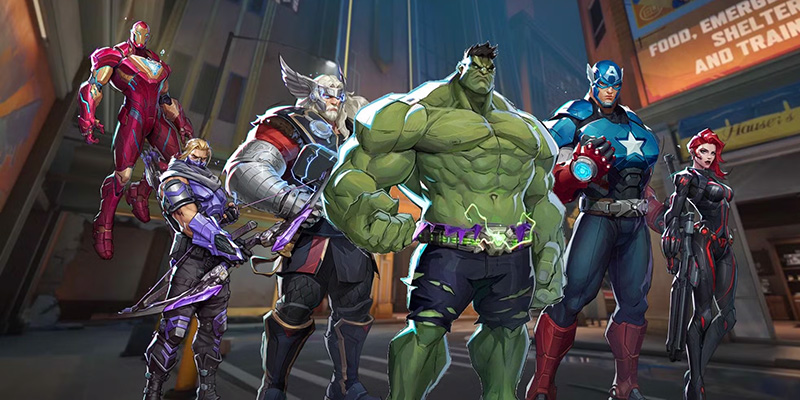Gaming industry expert reveals why versatility across all three roles accelerates competitive progression and enhances team performance in NetEase's hero shooter
Published by Boosting Ground - Gaming Performance Analysis
Marvel Rivals players seeking to elevate their competitive performance are discovering that mastering multiple roles provides significant advantages over single-role specialization, according to comprehensive gameplay analysis and competitive insights shared by veteran players.

The Competitive Edge of Role Flexibility
In the absence of a role queue system, Marvel Rivals presents unique opportunities for players willing to expand beyond their comfort zones. Gaming performance analyst Drew Cordell, who has accumulated over 200 hours of gameplay since launch, emphasizes that while role specialization remains valuable, the strategic benefits of cross-role competency far outweigh the comfort of single-role focus.
The fundamental principle centers on adaptability within Marvel Rivals' dynamic team composition system. Players who develop proficiency across Vanguard, Duelist, and Strategist roles position themselves advantageously in competitive scenarios where team balance often determines victory outcomes.
Breaking Down Role-Specific Learning Benefits
Each role in Marvel Rivals teaches unique skills that benefit overall gameplay understanding and mechanical improvement.

Strategist Role: Positioning and Survival Mastery
The foundation for understanding advanced positioning mechanics throughout Marvel Rivals.
The Strategist role serves as the foundation for understanding advanced positioning mechanics throughout Marvel Rivals. Players who invest time in support characters develop crucial backline awareness and learn to maintain optimal distance from immediate threats.
Positioning mistakes in the Strategist role result in immediate consequences - poor placement leads to rapid elimination, which subsequently triggers team collapse. This harsh feedback loop accelerates learning about safe angles, cover utilization, and threat assessment that applies across all roles.
Vanguard Role: Team Fight Control and Timing
Masters of engagement timing and spatial control, creating opportunities for teammates.
Vanguard gameplay teaches the complex art of engagement timing and spatial control. Players in this role assume responsibility for initiating team fights, creating opportunities for teammates, and providing protective support for more vulnerable team members.
The role demands understanding of team fight cadence - knowing when to engage, when to retreat, and how to create space for Duelist and Strategist teammates to execute their responsibilities effectively. Vanguard players develop shot-calling instincts and learn to read enemy team positioning for optimal engagement windows.
Duelist Role: Target Priority and Aggressive Execution
Focuses on damage optimization and target selection strategies for maximum impact.
Duelist characters focus players on damage optimization and target selection strategies. The role emphasizes the critical importance of focusing fire on high-value, low-health targets rather than inefficiently attacking heavily armored Vanguard characters.
Successful Duelist play requires aggressive positioning to pressure enemy Strategists while capitalizing on space and opportunities created by allied Vanguards. This role teaches players to identify elimination opportunities and execute decisive actions under pressure.
Advanced Team Synergy Through Multi-Role Understanding
Cross-role knowledge enables sophisticated team coordination that single-role specialists cannot achieve. Players with diverse role experience can predict teammate needs and provide targeted support based on intimate understanding of each role's requirements and limitations.

Simultaneously, coordinating Iron Volley and Mag-cannon attacks on Winter Soldier's targets increases elimination probability and enables ultimate ability reset for sustained team fight advantage.
Conversely, when playing Strategist characters like Rocket Raccoon against enemy Winter Soldier threats, multi-role knowledge enables proactive defensive responses. Deploying C.y.a. healing stations anticipates incoming burst damage while providing damage amplification for teammates to neutralize aggressive threats.
Strategic Advantages in Competitive Environments
- Enhanced teammate value in competitive compositions
- Better understanding of enemy behavior patterns
- Improved tactical flexibility during matches
- Insurance against meta shifts and hero nerfs
- Faster adaptation to new heroes and strategies
- Requires significant time investment across all roles
- May dilute mechanical skill in primary role initially
- Overwhelming learning curve for new players
- Need to maintain proficiency across multiple heroes
Enhanced Teammate Value
Role flexibility dramatically increases player value in competitive team compositions. Without role queue restrictions, adaptable players enable teammates to select their strongest roles while maintaining balanced team compositions across all competitive scenarios.
This flexibility proves particularly crucial in Competitive mode, where any tactical advantage contributes to long-term win rate improvement and ranking progression. Teams with adaptable players consistently outperform rigid, single-role focused groups.
Meta Adaptation and Future-Proofing
NetEase's frequent hero rebalancing updates continuously shift Marvel Rivals' competitive meta. Heroes dominating current strategies may become niche selections following balance adjustments, creating challenges for players heavily invested in specific characters.
Historical examples from Season One illustrate this principle. Players who specialized exclusively in subsequently nerfed characters faced significant ranking challenges, while adaptable players maintained competitive performance through strategic role transitions.
Competitive Success Through Strategic Flexibility
Real-world competitive examples demonstrate the practical benefits of role diversity. During Season One competitive climbing, successful teams often featured core player combinations covering Strategist and Vanguard roles consistently, with flexible role switching capabilities for tactical adjustments between rounds.
Mid-match role transitions enable teams to counter enemy strategies and address performance deficiencies through tactical adaptation. Players with cross-role competency provide teams with strategic options unavailable to single-role specialists.
Implementation Strategy for Competitive Improvement
Recommended Learning Approach
Optimal role development involves mastering 2-3 heroes within each role before advancing to specialized techniques. This foundation provides sufficient flexibility for competitive scenarios while maintaining manageable learning scope.
| Role | Recommended Heroes | Learning Priority |
|---|---|---|
| Vanguard | Magneto, Dr. Strange, Groot | High |
| Duelist | Iron Man, Spider-Man, Winter Soldier | Medium |
| Strategist | Mantis, Luna Snow, Rocket Raccoon | High |
Future Content Integration
NetEase has announced an accelerated character release schedule beginning in Season Three, with new heroes added monthly. This rapid content expansion requires competitive players to continuously update their game knowledge and adapt to evolving strategic possibilities.
Long-term Competitive Development
Role flexibility represents investment in long-term competitive improvement rather than abandonment of primary role specialization. The strategy focuses on comprehensive game understanding and tactical adaptability while maintaining core role expertise.
The combination of mechanical skill development across multiple roles and enhanced strategic understanding creates compound benefits for competitive performance. Players develop superior enemy behavior prediction, improved team coordination capabilities, and increased tactical options for challenging competitive scenarios.
Advanced players can leverage role switching mid-match to counter specific enemy compositions, exploit team fight advantages, and provide tactical surprises that catch opponents off-guard. This requires deep understanding of all roles and exceptional game sense.
The Path to Competitive Excellence
Marvel Rivals' unique design philosophy rewards strategic adaptability over rigid specialization. Players who embrace cross-role learning position themselves for sustained competitive success while providing enhanced value to their teams across all competitive scenarios.
"The investment in role diversity pays dividends through improved win rates, faster competitive climbing, and enhanced enjoyment through varied gameplay experiences."
The investment in role diversity pays dividends through improved win rates, faster competitive climbing, and enhanced enjoyment through varied gameplay experiences. As Marvel Rivals continues evolving through regular content updates and balance adjustments, adaptable players will maintain competitive advantages over specialists.
For players seeking competitive improvement in Season Two and beyond, role flexibility represents the most effective strategy for achieving ranking goals while developing comprehensive game mastery that transcends individual character or role limitations.
